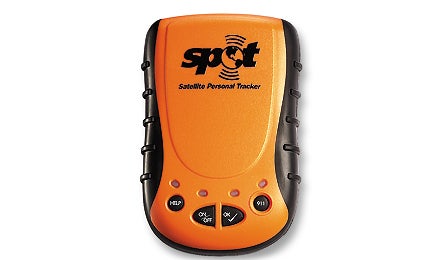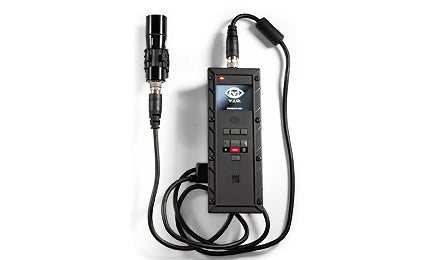March 2008 Essentials Review: High Tech

Photo by Sethhughes.com

SPOT Satellite Personal Tracker, Sethhughes.com

V.I.O POC.1 Video System
DIGITAL CAMERAS
Best Buy
Olympus SP-560 UZ It used to be that hikers had to lug heavy telephoto lenses to capture crisp wildlife images. No longer. This compact 8mp features a stunning 18x optical zoom; compare that to the 4x found in most point-and-shoots. And its digital zoom magnifies subjects up to 100x. You’ll need to spend twice as much on an SLR and lens kit to beat that. The built-in lens does a decent job with wide-angle shots, too; it zooms out to an SLR-equivalent 28mm. Action shots and skylines are crisp and color-correct, thanks to an image stabilizer and light sensor that work together. Other sweet features: 33 shooting modes including 640 x 480 video, plus full manual control; fast auto-focus; and a speedy image processor (up to 40 frames per second). And since it uses AAs, there’s no recharging on long trips. Video tip: Turn the sound on before shooting (it’s shipped with the sound off). $500; 12.9 oz.; olympususa.com
Sony Cyber-shot DSC-T20
This high-performance mini raises the bar for ultra-compact, sub-$300 point-and-shoots. It has a big 3-inch screen with touch controls, shoots art-gallery-ready prints (8.1mp), and runs slideshows on an HDTV–all in a pocket-friendly package. A large sliding cover protects the lens (3x optical/2x digital). Advanced users can edit colors and trim photos inside the camera without a PC, and there are 31MB of extra internal storage in case you forget a memory stick or run out of space. It comes preset with 10 scene modes and runs on a rechargeable lithium-ion battery. $270; 4.5 oz.; sonystyle.com
VIDEO
Sony Handycam DCR-SR82
Unless you’ve been thru-hiking for the last six months, you probably know that the cost of digital memory has cratered faster than the mortgage market. Case in point: This handheld digicam features a 60GB hard drive–enough for 40 hours of video to jumpstart your own survival show. In Great Sand Dunes National Park, the 25x optical (100x digital) zoom framed hikers from a quarter mile away. An intuitive touch-screen makes it easy to correct white balance and cycle through nine shooting modes, and the 2.7-inch screen swivels 270 degrees for low-angle shots and self-portraits. The camcorder survived two drops without damage, thanks to a shock absorber that cushions the processor. Downside: The rechargeable battery only lasts 1.5 hours. $600; 14 oz.; sonystyle.com
V.I.O. POV.1 Video System
This helmet-cam-plus is one of the coolest video tools we’ve tested this year. Its loop-and-tag feature lets you record clips in preset loops (up to 30 minutes), then tag only the video you want to save. That means you can continuously record an entire three-hour mountain-bike ride, but just keep the big crash at mile 12–all without a stack of memory cards. “I captured the highlights of a five-day backpacking trip on a 2-gig memory card,” raved a tester. Its lipstick-size camera works best attached to a helmet (straps included), but we also lashed it to trekking poles and packs. A crimp-resistant, 5-foot cable with an integrated microphone connects camera to recorder and 2-inch LCD screen, and it’s controllable with a wireless remote. The waterproof kit runs on four AAs and captures video in six resolutions. Video editing software is included. Gripe: For the price, we want a lens that zooms. $850; 1 lb. 1 oz. (with batteries); vio-pov.com
WATCHES
Suunto Lumi Terra
“I love its low profile,” says one of the testers who evaluated this women-specific timer. “It’s half the bulk of most altimeter watches.” It records altitude, barometric pressure, weather trends, and logs specific details on your hike or trail run, including duration, altitude, and elevation gain. And it records changes in altitude when you’re moving and barometric pressure when you’re stopped. The benefit? The watch won’t forecast a storm as the pressure plummets when you climb 3,000 feet (altimeter watches measure pressure to determine altitude). Warning: The features and settings are not intuitive, so don’t lose the owner’s manual. $389; 3 oz.; suuntousa.com
Bargain!
Garmin Forerunner 50
The only feature not included in this sports watch is a GPS. That’s correct, this GPS giant decided to lose the satellites for this superlight, moderately-priced fitness tool. The Forerunner 50 provides the usual watch features, plus a few others when combined with its optional heart-rate monitor and pedometer: pace, distance, calories burned, and heart rate. And when you return from a run, ride, or hike, the Forerunner 50 automatically sends data wirelessly to a USB receiver plugged into your PC. In seconds, you can analyze your workout, compare it to past sessions, and share it online. Nitpick: The watch face lacks a backlight for night viewing. $107 (with heart-rate monitor), $160 (with pedometer), $213 (both); garmin.com
HighGear Altis TI
This altimeter watch is stylish enough for dinner with the boss yet tough enough for climbing Rainier. In addition to the usual features, this shiny titanium model tracks elevation gain/loss and atmospheric pressure over a 24-hour period, so you can view your progress and predict incoming weather. And it features a scratch-resistant face and digital compass. Tip: Preset the elevation of your home, office, or favorite peak, and you can recalibrate the altimeter in the field with a push of a button. $300; 3.6 oz.; highgear.com
PERSONAL LOCATOR BEACON
SPOT Satellite Personal Tracker
This palm-size widget is a GPS, personal locator, and emergency responder rolled into one. It works three ways: 1) You safely arrive at camp but want to ease your spouse’s concerns back home. Hit the OK button and the unit triggers an “I’m OK” email message to him/her with your location pinpointed on a Google Map. 2) You fall and break your wrist in a talus field. The injury is not life-threatening, but you need assistance. The Help button triggers an email/location message to your friends and family. 3) A grizzly chews off your foot. Press 911, and emergency responders are dispatched to your location. We’ve successfully sent OK messages from mountains in Colorado, canyons of Utah, and on sailing trips in the Caribbean. $170 (plus $100 annual fee); 7.4 oz.; findmespot.com